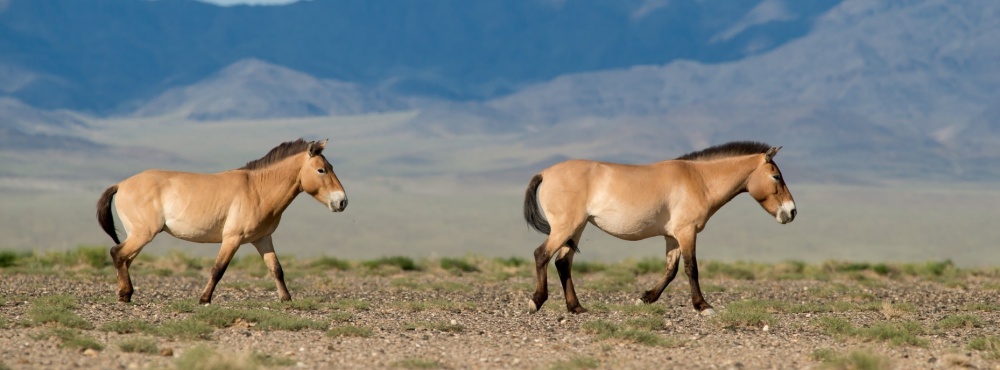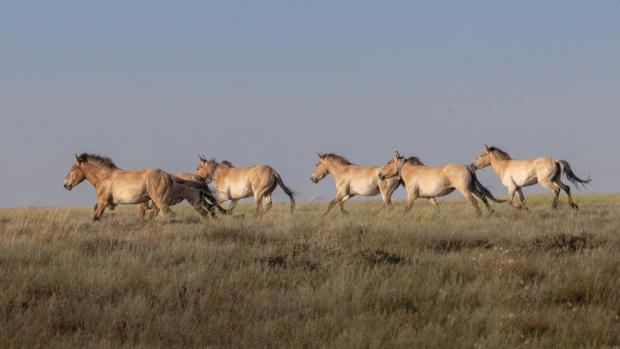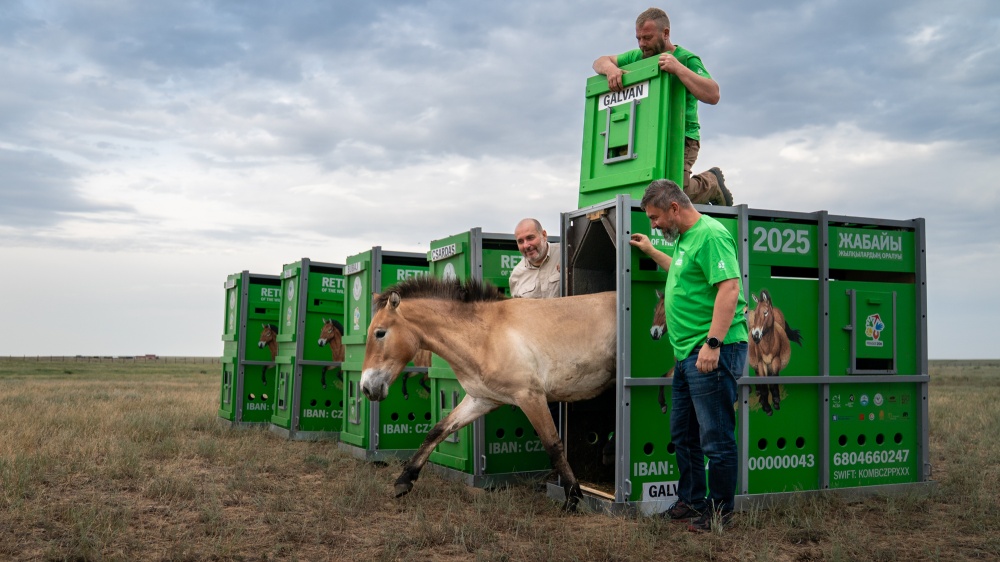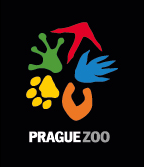Return of the wild horses—Kazakhstan

Historically, the Przewalski’s horse was widespread across the vast steppes of Central Asia, including Kazakhstan. Since 2024, Prague Zoo has been conducting transports aimed at reintroducing this species to the country. Over the course of five years, a total of approximately 40 Przewalski’s horses are to be released to the Altyn Dala steppe region, forming the foundation of a reintroduced population.
 A herd of Przewalski’s horses runs for the first time in hundreds of years through the landscape of the Golden Steppe in Kazakhstan, where their ancestors once went extinct. Photo: Miroslav Bobek, Prague Zoo
A herd of Przewalski’s horses runs for the first time in hundreds of years through the landscape of the Golden Steppe in Kazakhstan, where their ancestors once went extinct. Photo: Miroslav Bobek, Prague Zoo
The idea of reintroducing Przewalski’s horses to the steppes of Kazakhstan has been under consideration for many years. Prague Zoo has been repeatedly approached on this matter, and in autumn 2022, discussions began on how to realise this intention. On the occasion of Czech Prime Minister Petr Fiala’s visit to Astana, the capital of Kazakhstan, the Director of Prague Zoo, Miroslav Bobek, signed a memorandum of cooperation on the return of Przewalski’s horses to Kazakhstan. He did so with Nurlan Kylyshbayev, the then chairman of Kazakhstan’s Forestry and Wildlife Committee of the Ministry of Ecology and Natural Resources, on 24 April 2023.
Immediately following this signing, a reconnaissance trip took place to assess the sites preselected for the reintroduction. The final choice was made in favour of the Altyn Dala (Golden Steppe) region in central Kazakhstan—a fertile steppe covering an area of 7,000 km2, free of domestic animals, with an abundant water supply and a suitable terrain profile. Another advantage was the existing basic infrastructure, which had been built several years earlier with the aim of reintroducing Przewalski’s horses; however, the project was abandoned due to the lack of legislative protection for the horses at the time, and the infrastructure was instead used for the reintroduction of Turkmenian kulans. Today, however, the Przewalski’s horse is listed in Kazakhstan’s Red Book of Endangered Species, and nothing stands in the way of its reintroduction any more.
The first of the five planned transports took place in the first week of June 2024 and, as with the transports to Mongolia, it was carried out in cooperation with the Czech Air Force. This was a double operation: one CASA aircraft with three horses on board departed from Prague-Kbely airport, while the second, carrying four horses, took off from Berlin. Upon landing at Arkalyk airport in Kazakhstan, the seven horses were transported overland to the Alibi reintroduction centre. They spent nearly a year there acclimatising to their future life in the Golden Steppe, and in June 2025, they were released into the wild to form the foundation of a new population in the land of their ancestors.
In June 2025, a second transport to Kazakhstan also took place, once again a double operation. This time, six mares and one stallion travelled from Prague-Kbely airport and from Debrecen in Hungary, again aboard CASA aircrafts. After landing in Arkalyk, both transport teams faced an eight-hour journey through difficult terrain to the Alibi reintroduction centre, where the horses were successfully released into acclimatisation enclosures.

The stallion Galvan runs into the acclimatisation enclosure in the Golden Steppe of Kazakhstan on 3 June 2025. Photo: Oliver Le Que, Prague Zoo
ZOOPRAHA.CZ
Contacts
- The Prague zoological garden
U Trojskeho zamku 120/3
171 00 Praha 7
Phone.: (+420) 296 112 230 (public relations department)
e-mail: zoopraha@zoopraha.cz
Others








